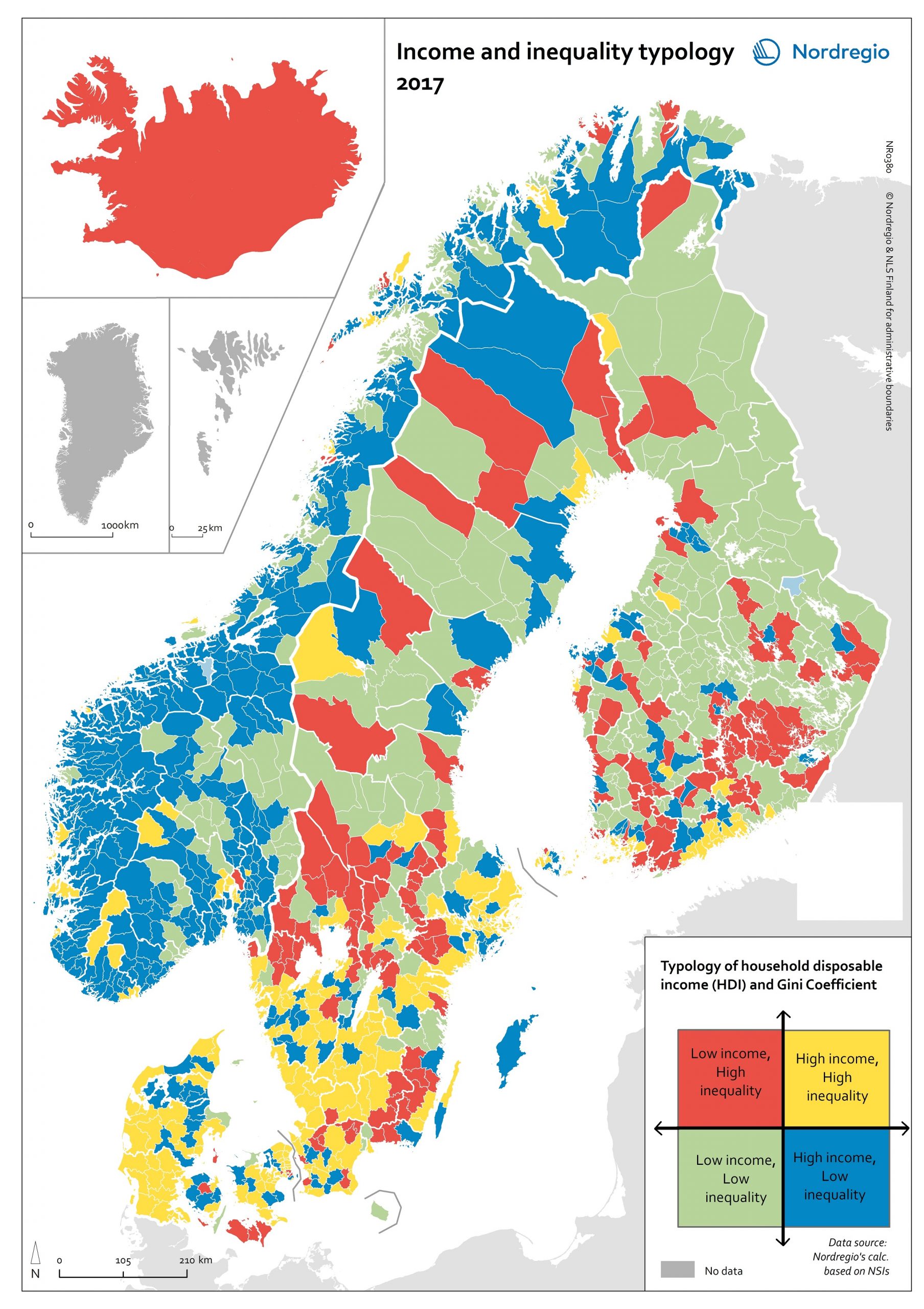The map shows a typology, combining two indicators to display income disparities between and within municipalities.
The map combines measurements of household disposable income (HDI) and the Gini Index to create four “types” of income distribution. Household disposable income is a common measure of income inequality. It measures the capacity of households (or individuals) to provide themselves with consumable goods or services. Comparing average HDIs is a convenient way of understanding inequality between municipalities. The Gini Index measures the extent to which the distribution of household income deviates from an equal distribution level. The Gini Index is therefore useful in understanding the inequality that exists within municipalities. Combining these measurements provides a comprehensive geographic overview of income in equality across the Nordic Region, both within and between municipalities.
The municipalities shaded in yellow on the map have an average HDI above the Nordic average, as well as a Gini coefficient above the Nordic average (i.e. high income, but unevenly distributed). This category includes most of the wealthiest municipalities, including municipalities in the capital regions – e.g. most municipalities in the Stockholm Region (Lidingö, Danderyd, Ekerö, Täby, Sollentuna), Copenhagen (Gentofte, Hørsholm, etc.), and Helsinki (Kauniainen). Several municipalities in southern Sweden and Denmark also fall into this category. Most of these have average HDIs just above the Nordic average.
The second category (blue on the map) consists of municipalities with HDI above the Nordic average and a Gini coefficient below the Nordic average (i.e. high income and even distribution). Most municipalities in this category are in Norway. Norway has a higher HDI and more even distribution than the other Nordic countries.
The third category (green on the map) consists of municipalities with both an HDI and a Gini coefficient below the Nordic average (i.e. lower income, but more evenly distributed). This category consists of many rural municipalities in Finland, northern Sweden and eastern Norway. The final category (red on the map) consists of municipalities with an average HDI below the Nordic average and a higher Gini coefficient (i.e. lower-income, and more unevenly distributed). This category consists mainly of a number of rural municipalities in Sweden and Finland, plus Lolland in Denmark (Some of the results found in the border regions can be explained by the fact that incomes from other countries are not included.). Based on national-level statistics, Iceland also falls into this category. It should, however, be noted that regarding the Gini coefficient the value on a national level is not comparable to the average values of all municipalities that has been used to calculate the Nordic average.


